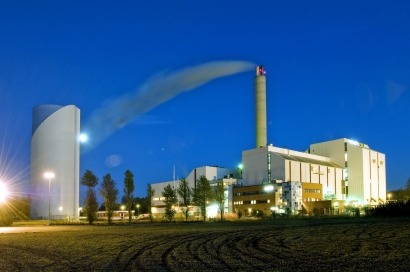
If you decide to build a new biomass plant or a wind farm, chances are local residents will quickly organize to communicate their opposition in an effort to curb your development. If you haven’t faced NIMBY before, you may think that it is rather harmless and easy to control. On the contrary, well-organized opposition may halt or even destroy your project.
The NIMBY syndrome is believed to have originated as early as the 1950s in the United States. However, the real boom in practice of communal opposition to development happened in the 1980s. While the true place of origin is debatable, one thing is clear: It didn’t take long before NIMBY spread throughout world. From China to Great Britain, from Brazil to Australia, the renewable energy industry is looking for ways to win this battle. NIMBY has no regard for geography or national borders. It is active in different countries, different cultures, and different industries for the same reason-to prevent development and progress.
Below are some of the most recent and significant examples of how NIMBY affects projects all around the world. These examples also highlight the fact that ‘young’ and ‘controversial’ industries are more susceptible to NIMBY opposition than traditional businesses.
Wind farms in England are facing fierce opposition. In 2010 the consent rates dropped 50 percent with only one-third of projects being approved by the authorities. This was an all time low for the industry, and it hasn’t improved much since. For instance, Pilrow Wind Farm near Rooksbridge is threatened by opposition to their plans to build six 140 meter tall turbines. NoPilrow, the local opposition group, carried out a survey among local residents to establish their view of the proposed development. According to their survey, out of 624 respondents, 561 were against the proposal. If the results are correct, the developer will have to address a rather serious issue. Such extensive disapproval rates have the potential to be fatal to the project.
A similar story is developing in Vancouver. Schneider Electric filed a lawsuit against the City of Vancouver for initiating a six-month moratorium on development that allegedly violates planning laws. The developer has a contract with Clark County to build a biomass power plant that would heat several buildings and generate extra electricity that could be sold on the grid. The level of local opposition, however, prompted the governing bodies to reconsider the proposal. Dozens of local residents united to form the Clark County Clean Air opposition group in hopes of persuading the commissioners to derail the project. Schneider Electric seems to be determined to win this battle. That being said, it will still have cost the developer time and money, even if the opposition backs down.
In 2010, an attempt to significantly reduce carbon dioxide (CO2) emission faced serious opposition in Beeskow, Germany. A Swedish energy company planned to build a CO2 storage facility deep under the ground of the city of Beeskow in Brandenburg. The project would have been one of the few in Europe and was supposed to significantly reduce CO2 emission from coal-fired power plants.
Instead of being released into the sky, emissions would be processed and stored in the underground facility. Researchers believe that by 2050 the use of this technology will reduce coal emissions by half and at minimal cost. The project faced fierce opposition from the locals. They labeled it ‘The New Chernobyl’ and made very dramatic displays on the streets, inside stores, and even on church roof tops. While the project continues to be developed, this intense opposition couldn’t have gone unnoticed. Valuable time and resources were spent on addressing this problem.
Some critics claim that this widely spread NIMBY syndrome is not a global problem, but rather an industry-specific issue. They argue that renewable energy is an unfamiliar and at times even controversial subject, thus raising suspicion from local communities. ‘Traditional’ businesses also fall under NIMBY attacks. The massive opposition to the Keystone Pipeline is an excellent example. The pipeline system is supposed to link a supply of Canadian crude oil with some of the largest refining markets in the US. The massive opposition to the project has reached the White House. Some time in November, various opposition groups plan to gather at the White House in Washington, D.C. and form a human chain around it as a sign of protest.
Perhaps the NIMBY fights do not always stand out on the news, but if you pay close attention, it will become evident how often various projects are halted due to opposition. Regardless of the industry or location, NIMBY always presents itself in an attempt to curb a proposal. Communal opposition to development may seem more appropriate and reasonable in Western societies, but NIMBY manifests itself even in the most remote locations. It has no regard for geography, culture or politics. It can attack any project no matter how big or small. NIMBY has gone global and continues to grow.
Also for our latest newsletter, www.publicstrategygroup.com
For further articles we can discuss. Al Maiorino

